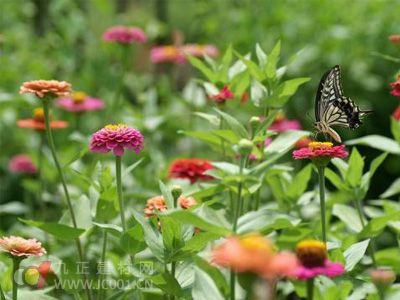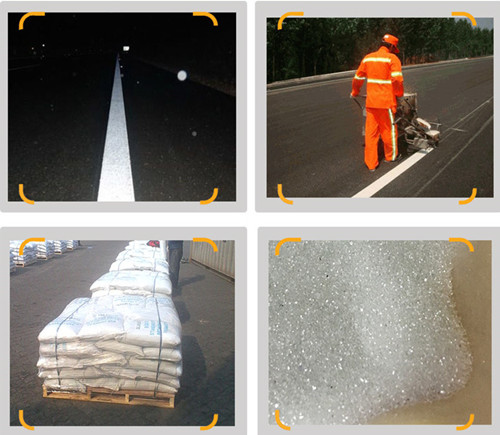Introduction of Zinnia cultivation technology
Zinnia Introduction to cultivation techniques :
Zinnia is a short-day plant, so it is necessary to regulate the length of sunshine to regulate flowering. When the sunshine is longer than 14 hours, the flowering will be postponed. It takes about 70 days from sowing to flowering, and the lingual flower will increase significantly at this time. When the sunshine is shorter than 12 hours, it can bloom in advance, from sowing to flowering. It takes 60 days, and the flowers at this time are more tubular flowers. In addition, the flowering period can also be controlled by adjusting the sowing date and the topping time.
During the sowing process, Zinnia requires a well-drained, loose, and fertile soil environment. Usually the germination temperature is 21-22 degrees, it needs to cover the soil when germination, and it can germinate in 2-5 days. During the growth process, the daily temperature should be maintained at 18 degrees and the night temperature should be 21 degrees. The time required from sowing to flowering is generally 9-10 weeks. It is also worth noting that Zinnia should avoid continuous cropping and should be rotated in due course.
Zinnia is easy to grow in the late growth stage. It is usually controlled by the following measures: one is to properly lower the temperature, the other is to ensure sufficient nutrient area and increase the row spacing; and the third is to pick up the heart in time to promote the growth of axillary buds. The specific operation method is generally carried out when the plant height is about 10 cm, leaving 2 to 4 pairs of true leaves and then picking the heart. In order to make the plants low and flowering, the dwarfing agent is often sprayed when the axillary buds grow to about 3 cm. For the cultivation of seedlings that are not long, if they are to limit their growth height, they should be topped.

Zinnia grows strongly, prefers a warm, dry and sunny environment, and is also resistant to half yin. The growth temperature is 20-25 °C, which is not resistant to heat. When the temperature is higher than 35 °C, the growth is obviously weakened, and the flowering is rare and the flowers are small. For short-day plants, under long-day sunshine (light 14 hours/day), the plant height increased and the lingual flowers were more; in short days (light 9 hours/day), the lingual flowers became smaller and the tubular flowers increased. It has strong adaptability and no soil selection, but it grows best in fertile soil with deep soil and good drainage. In the case of heavy rain or poor drainage in the summer, the plants are slender, the flowers become smaller, and the continuous cropping is avoided.
Zinnia is mainly based on seed reproduction and can also be propagated. Seed propagation should be carried out in spring, usually in the middle and late April, and the germination temperature is 15-20 °C. Its seeds are suspected of being light, and should be covered with soil, watered, and moisturized after sowing, and sprouted after about 1 week. The germination rate is generally around 60%. During the period from Xiaoman to Xiazhi, combine the topping and pruning, select the strong branches, cut a section of 10-15 cm long shoots for cuttings, remove the lower leaves, leave the upper two leaves, insert into the fine river sand, often spray water, Appropriate shading, rooting can take place after about 2 weeks.
After colonization, it is not necessary to fertilize at the seedling stage. Generally, liquid fertilizer is applied once a month. Appropriate topdressing can be applied close to the flowering stage, and liquid fertilizer is applied every 5 to 7 days until the flowers are in full bloom. When the seedlings are as high as 10 cm, leave 2 pairs of leaves and pick the heart to promote the germination of the side branches. When the side branches grow to 2 to 3 pairs of leaves, leave 2 pairs of leaves and pick the heart for the second time. In doing so, the plant can be enlarged and flowered. It takes 70 days to bloom after spring sowing. Zinnia blooms at the top of the branch. When the flower is ruined, two pairs of leaves are removed from the base of the stem to remove the residual flower in time to induce new shoot tips at the leaf axils of the incision. After pruning, watering should be done frequently, and topdressing should be carried out 2 to 3 times to extend the flowering date before the frost. The first batch of mature seeds before the rainy season is of good quality and should be harvested in time.
When seeding 4-6 leaves, they are planted in 10-12 cm pots. There are few lateral roots of Zinnia, and attention should be paid to less lateral roots when transplanting. When the seedling height is 10 cm, the topping is carried out to promote the multi-point branching. In order to dwarf the plant in production, it is sprayed with 0.5% longer than 2 weeks after topping, and the effect is remarkable. Growth regulating substances can also be used to regulate the flowering period. The seedling stage is sprayed with 0.25%-0.4% longer than the long-term solution, which can be flowered in advance, and the flowers are tight; if 0.4%-0.8% longer or chlormequat, spray 2-4 times, Flowering will be postponed. Fertilize once every half month in the seedling stage, and add 2 times of phosphorus and potassium fertilizer before flower bud formation. Or use "Huiyou" 20-20- 20 general fertilizer. After the flower is not kept, it is necessary to remove the residual flowers in time, and promote the new side branches between the leaves and then bloom. Seedling plants must be isolated to prevent crossbreeding between varieties and affect seed quality.
Drop-on Glass Beads, during the process of road work, drop glass bead onto the road line painted with thermoplastic paint which is heated to certain temperature while the paint is still wet, thus to increase the reflectivity of road marking.
How Glass Beads are Applied to Pavement Marking Materials:
The glass beads are applied to pavement marking materials. They can be premixed in marking materials before application, or they can be dropped or sprayed into the wet paint directly behind the paint sprayer, or a portion can be dropped onto premixed two-part epoxy or thermoplastic materials.
The top surface of beads is enveloped by the paint, with the wicking action of the paint rising up to above the midpoint of the bead. This provides two actions. It locks the glass beads into the paint and allows the paint to act as a diffuse reflecting surface for retroreflection, with the paint color affecting the color of the retroreflected light. The light entering the glass bead is bent and focused towards the back of the bead and reflected back out towards the headlights and driver.

Drop-on Glass Beads
Thermoplastic Paint Drop-On Glass Beads,Traffic Paint Drop-on Glass Beads, Road Marking Drop-on Glass Beads, Reflective Drop-on Glass Beads
YONGQING BAILUYUAN GLASS PRODUCTS CO.,LTD , http://www.blyglassbeads.com